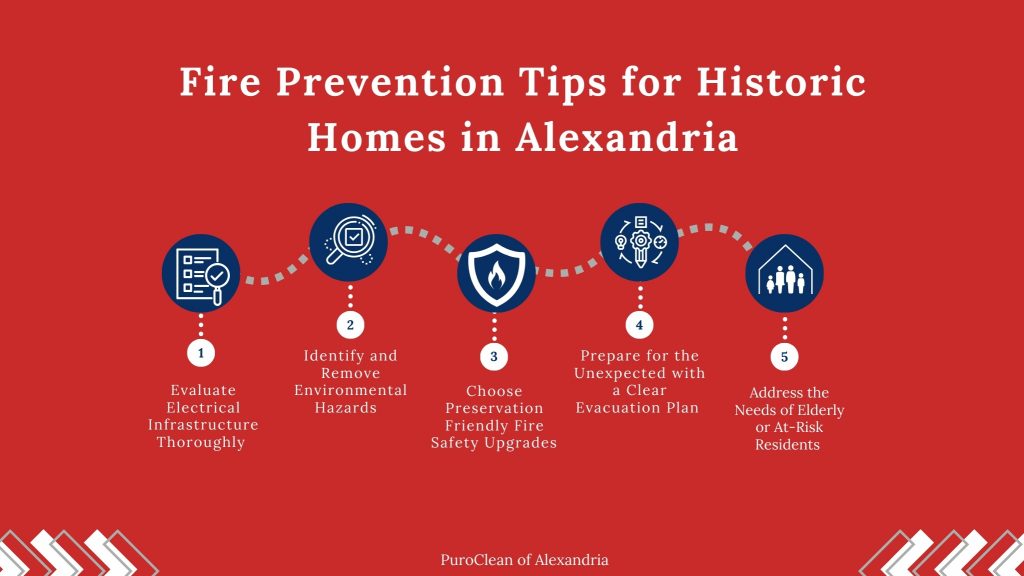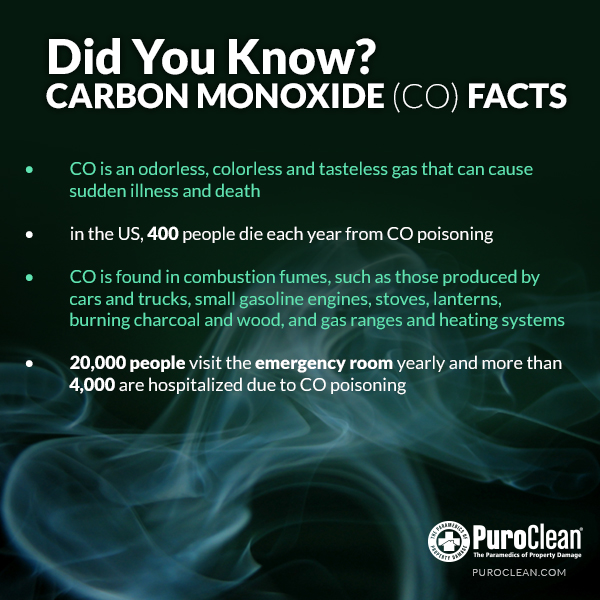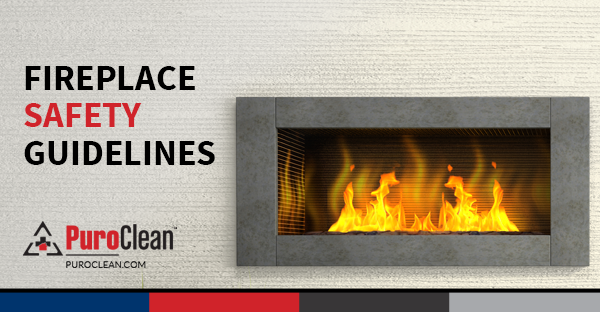Alexandria is a city of character. Its homes, many dating back over a century, reflect the craftsmanship, elegance, and historical richness of a bygone era. However, homeowners often overlook that this charm also comes with a higher risk of fires.
This blog examines the heightened fire risk historic homes Alexandria face and provides practical strategies to prevent fires. It also clearly outlines the process of restoring your home if fire damage occurs.
Saving Alexandria’s Legacy from Flames
Walking through the historic neighborhoods of Alexandria, it’s easy to be captivated by the brickwork, aged wood detailing, and storied facades that have stood the test of time. These homes are living monuments to architectural beauty and resilience. However, despite their aesthetic appeal, such structures often conceal outdated systems and hidden dangers. As preservation meets modern living, a new challenge arises: understanding and mitigating the fire risk in historic homes in Alexandria.
Most of these properties were built in eras that lacked today’s safety standards, leaving them exposed in ways their modern counterparts are not. Maintaining Alexandria’s historic legacy demands careful attention to fire prevention, thoughtfully combined with respect for heritage.
Evaluate Electrical Infrastructure Thoroughly
The heart of many fire-related issues in older homes lies in their electrical systems. Wiring standards have evolved significantly over the past century, but many of Alexandria’s historic homes still operate with systems that were never meant to power contemporary appliances or technology.
Instead of assuming things are functioning safely, have your home evaluated by a certified electrician who understands historic construction. Look for signs such as dimming lights, frequent breaker trips, or burning odors, all of which suggest your home may be under electrical strain.
Updating wiring doesn’t have to mean tearing down walls or replacing everything. Professionals with experience in retrofitting older properties can enhance safety while preserving the original design.
Identify and Remove Environmental Hazards
When thinking about fire risk, most people picture flames caused by human error. However, in older homes, danger can come from the materials themselves. Alexandria’s historic homes often contain original wood, dry plaster, and insulation types that are highly flammable by today’s standards, as outlined in this local guide on post-fire recovery.
A comprehensive fire safety audit is the best place to begin. It should cover all areas, including attics, crawl spaces, and chimneys. Removing or treating hazardous materials with fire-retardant products is an effective way to reduce fire risk without replacing authentic features.
Be especially mindful of storage near furnaces or hot water heaters. Combustible clutter in these spaces increases vulnerability to accidental ignition.
Choose Preservation-Friendly Fire Safety Upgrades
Many homeowners are hesitant to install modern safety features for fear they’ll alter the character of their property. Fortunately, today’s market offers many solutions that combine effectiveness with minimal visual impact.
For instance, wireless smoke detectors can be placed discreetly and interconnected without drilling or rewiring. Similarly, modern sprinkler systems are now available with concealed heads that blend with ceilings or decorative moldings.
These types of upgrades not only protect your home and family but also support long-term property value, especially in the context of increasing fire risk historic homes Alexandria.
Prepare for the Unexpected with a Clear Evacuation Plan
An often-overlooked aspect of fire prevention is having a plan for what to do if a fire does occur. This is particularly critical in homes with complex layouts or narrow staircases that are typical of older construction.
Work with all household members to create an evacuation plan. Practice routes that allow for quick exits from every room. Keep keys, flashlights, and phones in easily accessible locations, especially at night.
Also, consider the installation of emergency ladders in second-floor rooms and illuminated exit signage for guests who may be unfamiliar with the layout.
Address the Needs of Elderly or At-Risk Residents
In many cases, Alexandria’s historic homes are passed down through generations, often housing older adults who may have mobility challenges. Fire safety planning in these cases must be more thorough and account for possible delays in response time.
Equipping bedrooms with smoke detectors that use both sound and flashing lights, as well as medical alert systems, can be lifesaving. For families caring for seniors, local providers of temporary in-home care can assist with recovery and support following a fire.
This consideration is vital not just for personal safety but also during historic home fire restoration Alexandria, when temporary living arrangements may be required.
Approach Restoration with Sensitivity and Strategy
Recovering from a fire is never easy, but in the case of a historic home, the process is particularly delicate. Restoration involves more than just repairs; it’s a process of reconstruction that must honor the home’s past while making it safer for the future.
Immediately following a fire, focus first on securing the property. Document damage for insurance purposes and work with contractors who have experience in historic preservation. They’ll understand the importance of retaining original materials and architectural details whenever possible.
Modern safety systems can often be integrated during restoration without compromising historical elements, a balance that is central to effective historic home fire restoration Alexandria.
Use Local Resources to Your Advantage
Alexandria is home to numerous preservation societies, city planning offices, and licensed restoration professionals who specialize in working with older structures. These organizations can provide guidance on local codes, funding opportunities for safety upgrades, and even recommend qualified contractors.
Being proactive by tapping into these resources ensures you’re not alone in the process. Whether you’re looking to prevent fires or rebuild after one, community expertise can be a crucial asset.

Conclusion
There is no doubt that historic homes in Alexandria contribute significantly to the city’s unique identity. Yet, these homes require care beyond surface maintenance. With aging electrical systems, flammable construction materials, and outdated safety infrastructure, the fire risk historic homes Alexandria face should not be underestimated.
But awareness leads to action. By investing in thoughtful upgrades, planning for emergencies, and choosing the right restoration partners, homeowners can preserve these architectural gems while keeping their families and neighbors safe.
Each of the tips outlined in this blog not only reduces risk but also enhances the long-term sustainability of historic living. Protecting history begins with protecting the home itself.
FAQs
Q1. Can I install a sprinkler system in my historic home without structural changes?
A: Yes. Many systems are now designed for minimal invasiveness, using concealed sprinklers that fit into existing ceilings.
Q2. Does the city of Alexandria offer financial assistance for fireproofing older homes?
A: In some cases, yes. Check with local preservation offices for grants or low-interest loans aimed at historic home safety upgrades.
Q3. How soon should I begin restoration after a fire?
A: As soon as the site is secure and assessed by professionals. Delay can lead to further damage from weather or vandalism.
Q4. Are there legal restrictions on making fire safety upgrades in a registered historic home?
A: Upgrades often require approval from the Board of Architectural Review, especially if they affect the home’s exterior or significant interior features.
Q5. Who should I contact for temporary housing after a fire?
A: Start with your insurance provider and then reach out to local agencies or services that coordinate short-term care and accommodation.




 PuroClean of Alexandria
PuroClean of Alexandria